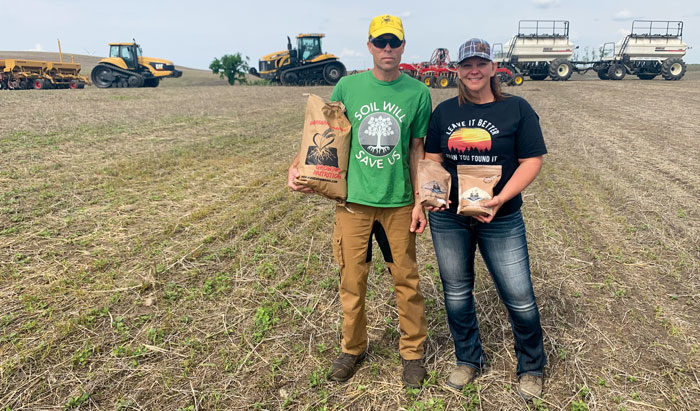No-Till Farmer
Get full access NOW to the most comprehensive, powerful and easy-to-use online resource for no-tillage practices. Just one good idea will pay for your subscription hundreds of times over.

SLASHING INPUTS. Having switched to no-till in 1999, Kelly (left) and DeAnna (right) Lozensky of South Prairie, N.D., began reducing inputs in 2014 and eliminated synthetic fertilizers in 2019. They switched to crops that required less fertilizer to help make the new system work.
Efficiency drove our shift to no-till in 1999. The practice meant less fuel, fewer tractor passes and reduced man hours. For all other aspects of our operation, though, it was more, more, more
Sourcing information from organizations aiming to sell farmers products influenced us to spend 14 years intensively managing our crops. Another meeting, another steak dinner and we would walk away thinking we needed yet another product or application to push yields ever higher.
Everything we did required more — more fertilizer, more seed treatments, more fungicide, more spray passes and time in the field, more money, more, more, more. It never quit. We called it “More-On” farming, and it was running us and our farm right into the ground.
Now we let our soils and crops tell us what we need. It turns out it’s less of nearly everything — including yields. We used to think big yields equaled good farming. We don’t think that way anymore.
As of 2019, we quit applying all fertilizers, including nitrogen (N). High-input crops were evaluated and several, including corn and sunflowers, were culled from the rotation. There was potential for high reward with those crops, but there was a certainty of high risk, especially in our region.
NAME: Kelly and DeAnna Lozensky
LOCATION: South Prairie, N.D.
ACRES: 2,500
YEARS NO-TILLING: 23 years
CROPS: Winter wheat, spring wheat, barley, oats, yellow peas, mustard, flax, malting barley, Egyptian hulless barley, Rouge de Bordeaux, Einkorn and spelt
ANNUAL PRECIPITATION: Extremely variable
…